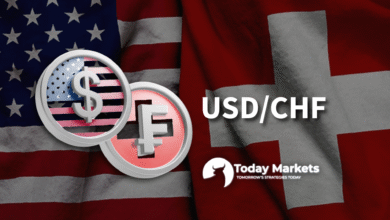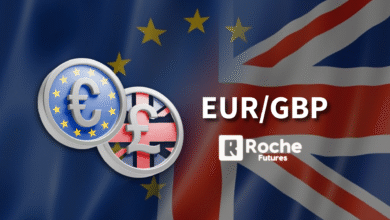Commodity Analysis – Oil, Gold, Platinum And Coffee
Oil
- Oil prices continue their ascent after yesterday’s limited sell-off, driven by persistent tensions between Israel and Iran. Israel has indicated that attacks will persist until Iran’s nuclear and ballistic missile programmes are neutralised.
- The most significant risk to the oil market would be a blockade of the Strait of Hormuz by Iran. While physically challenging, the initiation of attacks on tankers cannot be ruled out. Such an action could elicit a decisive response from the United States and other Arab nations.
- At present, key Iranian oil infrastructure remains untouched, suggesting a limited probability of a Strait of Hormuz blockade. Iran currently produces approximately 3.3 million barrels per day (bpd) and exports around 1.7 million bpd.
Short positions in WTI crude are declining, though long positions remain constrained. The forthcoming COT CFTC report will reveal whether funds have reacted to the latest Middle East developments. Source: Bloomberg Finance LP
The behaviour of oil prices in response to the recent geopolitical risk aligns with previous crises. Typically, most price movements have subsided within 10-15 trading sessions following the onset of the rally. Source: Bloomberg Finance LP, XTB
Gold
- Gold is testing historical highs amid continued market uncertainty stemming from the significant escalation between Israel and Iran.
- Citi has revised its three-month price target for gold downwards to $3,300 per ounce from $3,500, and its six-to-twelve-month forecast to $2,800 from $3,000. Citi anticipates gold trading within a $3,100-$3,500 range in the coming quarter, averaging $3,300 per ounce. The bank attributes this sustained elevated price to ongoing geopolitical concerns, the US budget, and global economic growth.
- Citi suggests that the recent daily peak in July around $3,500 could mark the current cycle’s high for gold. The bank assigns only a 20% probability to a more severe escalation that would propel gold to new historical highs.
- Central banks in the Global South are reportedly increasing their gold reserves, moving away from the US dollar. A survey by the World Gold Council indicates that most central banks (15 from developed nations and 58 from emerging economies) anticipate an increase in global gold reserves.
The de-dollarisation trend among central banks is providing support for gold. EURUSD is testing the 1.1600 level, while gold tested earlier historical closing prices during today’s session. Source: xStation5
Platinum
- Platinum prices have reached a four-year high, driven by increased demand from China. Investors in the Chinese market are seeking alternatives to gold, which is at elevated levels and beginning to show signs of potential overbought conditions.
- Goldman Sachs, in its latest commentary, indicates that a breakout above the 2020/2021 highs is unlikely. The most probable scenario is a return to the $800-$1,150 per ounce range in the near term. The bank notes that investment purchases are highly price-sensitive; if prices rise excessively, the market will seek other alternatives.
- One scenario for a potential price surge involves further mining issues in South Africa. Such a situation would necessitate a significant global increase in energy prices, similar to what was observed in 2022.
- According to the latest report from the World Platinum Investment Council, this year’s deficit is projected to be larger than in subsequent years, reaching 966,000 ounces in 2025, compared to 922,000 ounces in 2024 and 896,000 ounces in 2023.
- Sprott Asset Management posits that despite deficits in recent years, high inventories have prevented a sustained price increase. However, inventories are now expected to fall to 2.5 million ounces this year, which, without an increase in supply, may only cover demand for a maximum of two to three years.
The number of long positions in platinum has significantly increased, though net positions remain in consolidation. The current number of long positions is the highest since 2020. Source: Bloomberg Finance LP
Platinum prices are recovering to recent local highs after Friday’s sell-off. Source: xStation5
Coffee
- Coffee prices remain under pressure due to improving production fundamentals in Brazil. Significant rainfall is currently observed in key producing regions, which is expected to boost potential output. However, excessive rainfall could lead to harvest delays if it persists.
- The Brazilian harvest is currently underway. Cooxupe, the country’s largest producers’ association, reports that 13.7% of crops among associated producers have been harvested so far, compared to 13.6% last year. Meanwhile, Safras & Mercado indicates that 35% of the total coffee in Brazil for the 25/26 season has been harvested, slightly lower than last year’s 37% but in line with the five-year average.
- The USDA report on the coffee market projects a 0.5% year-on-year increase in Brazilian coffee production in the 25/26 season, while Vietnam’s production is expected to rise by 6.9% year-on-year. Brazilian coffee exports in May fell by 36% year-on-year to 2.8 million bags, which may be more a reflection of a strong Brazilian real than limited supply.
The correlation between the Brazilian real and coffee prices is breaking down. A strong real could limit the global rise in coffee prices. Furthermore, coffee itself is under pressure as the Brazilian harvest progresses as expected. Source: xStation5
Coffee prices are seeing a significant decline. Since the beginning of 2024, the one-year average has not been tested. Historically, a breach of this average has led to a longer correction. Conversely, the five-year average has often acted as support or resistance. However, the current five-year average is slightly above 200 cents per pound, the lowest level since last May. Source: Bloomberg Finance LP, XTB
While production in Brazil is expected to increase marginally, the production outlook in Asia is markedly improving, with significant rebounds anticipated in Vietnam and Indonesia. Source: Bloomberg Finance LP, XTB
Coffee inventories tracked by ICE are consolidating. Source: Bloomberg Finance LP, XTB
The material on this page does not constitute financial advice and does not take into account your level of understanding, investment objectives, financial situation or any other specific needs. All information provided, including opinions, market research, mathematical results and technical analyzes published on the Website or transmitted To you by other means, it is provided for information purposes only and should in no way be construed as an offer or solicitation for a transaction in any financial instrument, nor should the information provided be construed as advice of a legal or financial nature on which any investment decisions you make should be based exclusively To your level of understanding, investment objectives, financial situation, or other specific needs, any decision to act on the information published on the Website or sent to you by other means is entirely at your own risk if you In doubt or unsure about your understanding of a particular product, instrument, service or transaction, you should seek professional or legal advice before trading. Investing in CFDs carries a high level of risk, as they are leveraged products and have small movements Often the market can result in much larger movements in the value of your investment, and this can work against you or in your favor. Please ensure you fully understand the risks involved, taking into account investments objectives and level of experience, before trading and, if necessary, seek independent advice.







